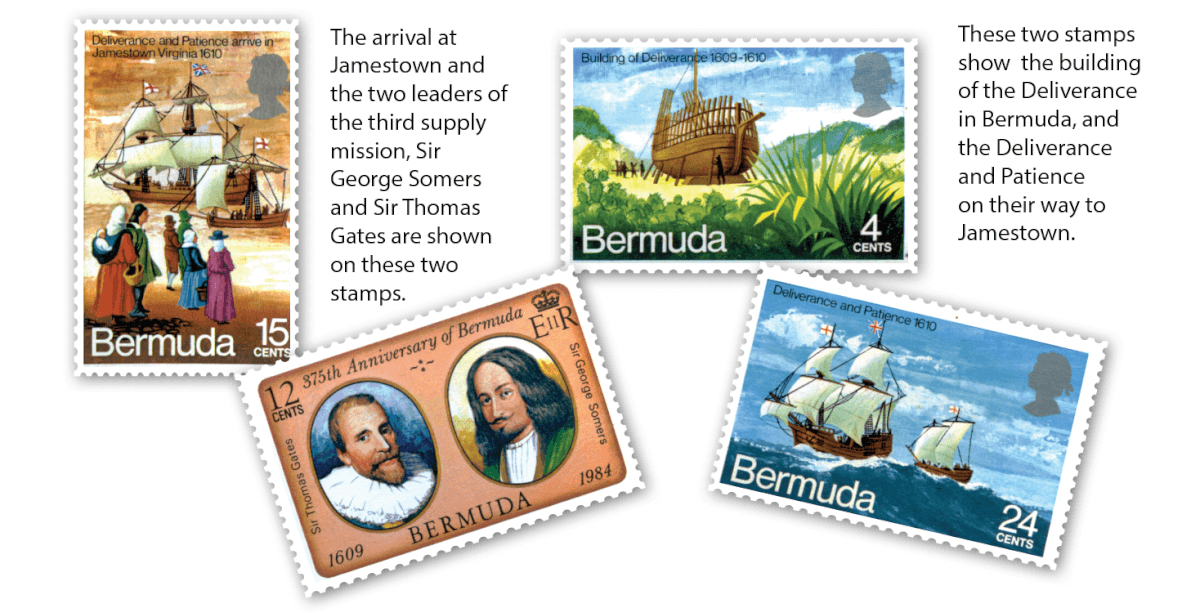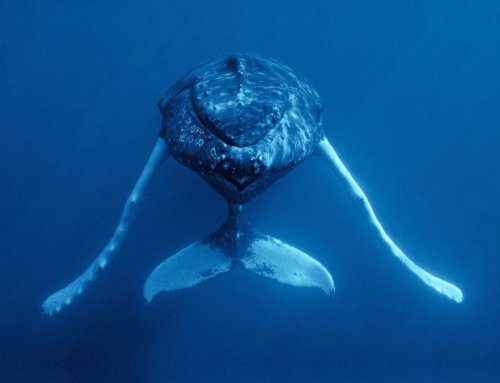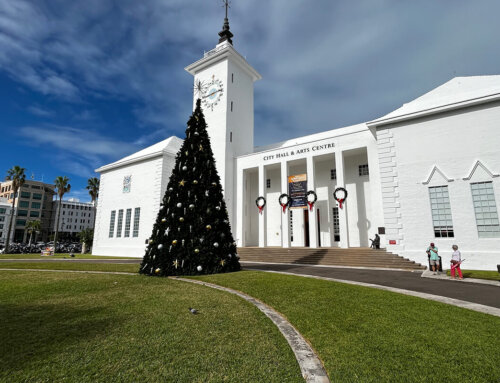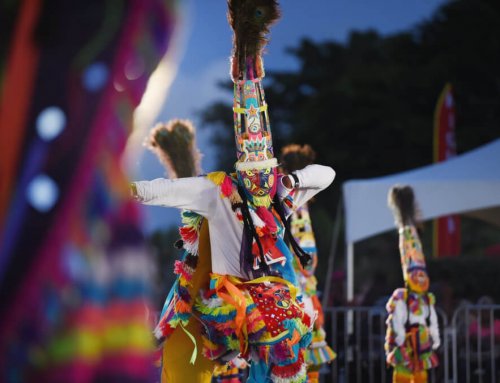Do You Know…
That the 1609 Wreck of the Sea Venture changed World History?
By Horst Augustinovic
Following two failed English attempts to establish settlements in North America – the Roanoke Colony in Virginia and the Popham Colony in Maine – the Jamestown settlement was established in Virginia in 1607. The following year two supply missions were sent from England, however, due to a lack of experience and resources, the colony was threatened by disease, starvation and warfare with Native Americans.
Captain John Smith implored the Virginia Company in London to “…send but thirty carpenters, husbandmen, gardiners, fishermen, blacksmiths, masons and diggers up of trees, roots, well provided; than a thousand of such awe have: for except wee be able to lodge them and feed them, the most will consume with want of necessaries before they can be made good for anything.”
London obviously took note of Captain Smith’s plea and decided that the third supply mission would be larger and better equipped than the two previous missions. They even decided to construct a new purpose-built emigrant ship – the Sea Venture – at a cost of £1,500. Displacing 300 tons, the Sea Venture differed substantially from contemporary ships – her guns were placed on the main deck rather than below, which was then the norm.
This meant that the Sea Venture did not have double-timbering and her hold could be sheathed and equipped for passengers. When the ship was launched in 1609 and sent on her maiden voyage to Jamestown on June 2, she may have had a critical flaw: her timbers had not yet set. This proved disastrous when on July 24, the fleet of nine ships ran into a strong storm – probably a hurricane – and the ships were separated.
After fighting the storm for three days, the caulking of the Sea Venture was forced from between her timbers and the ship began to leak rapidly. Although everyone aboard was bailing, the water in the hold had risen to nine feet and both passengers and crew gave up all hope of survival. It was at that point when Admiral Sir George Somers, at the helm of the ship, saw land and deliberately sailed the Sea Venture onto the reefs to prevent her from foundering and allowing all 150 people aboard to get on land safely.
The survivors were fortunate to salvage parts and timbers from the Sea Venture and soon built two new ships, the Deliverance and Patience. While building the two ships, the longboat of the Sea Venture was fitted with a mast and sent to find Virginia. Unfortunately the boat and crew were never seen again. On May 10, 1610, the Deliverance and Patience finally set sail with all survivors and laden with supplies such as salted pork, leaving behind only two mutineers.
On arrival in Jamestown on May 23, the survivors’ ordeal did not end, however, as only 60 of the 500 settlers were found alive and the settlement of Jamestown was considered unviable and hopeless. On June 10 everybody was boarded onto the Deliverance and Patience and the two ships began to make their way back to England. As they sailed down the James River, they were met by the arrival of yet another relief fleet – three ships under the command of the new military governor, Baron De La Warre.
With new hope, Jamestown was granted a reprieve and the settlers were re-landed. Under strong leadership, the settlers’ fate soon changed for the better. They found food, improved their security and soon began to plant tobacco, producing the first profitable crop by 1614 and securing the success of the colony.
Had the Sea Venture sank in that 1609 hurricane, would Jamestown have survived without the leadership of Admiral Sir George Somers, Lieutenant-General Sir Thomas Gates, Captain Christopher Newport, Sylvester Jordain and William Strachey? Probably not.
So the wreck of the Sea Venture not only began Bermuda’s 400 years of permanent settlement, but altered the fate of Jamestown, England’s first successful foothold in the Americas, changing the New World forever.

The Bermuda Post Office has issued two sets of stamps regarding the Sea Venture. Shown here is the fleet of nine ships leaving Plymouth, England, and the flagship Sea Venture wrecked on Bermuda’s reefs.
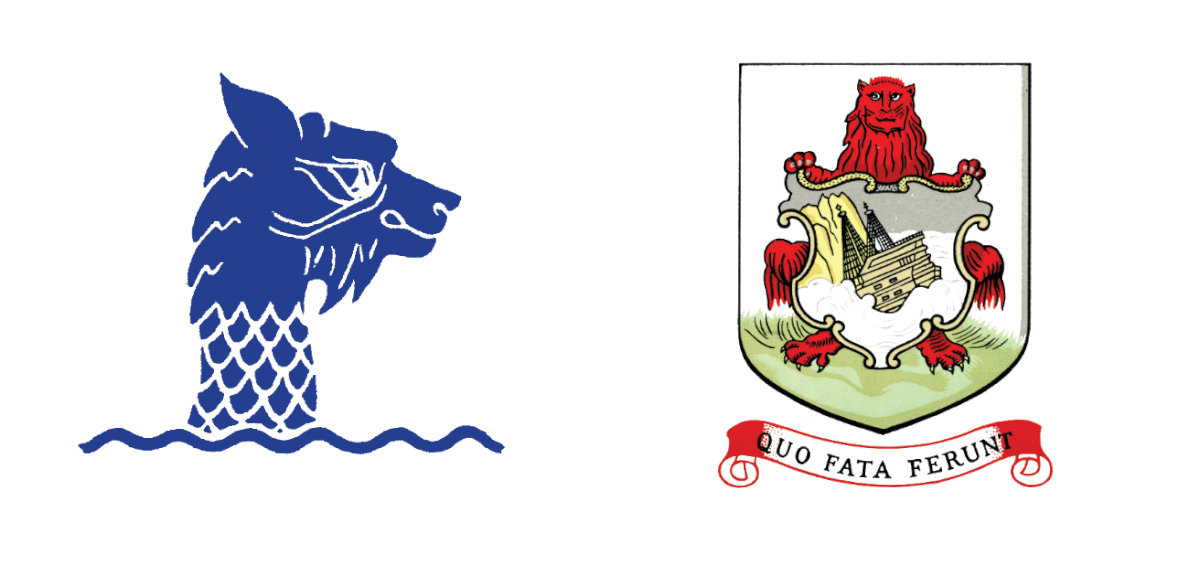
‘Ventura ad Marem’, the figure head of the Sea Venture, was the symbol of venture at sea. A mythical animal with the head of a hound and the scales of a fish, this ancient Sea Dog was used as a talisman by Phoenicians as early as 700 B.C.
Officially the Coat of Arms of Bermuda features a red lion holding a shield showing an earlier shipwreck. I’d like to think that it is a Sea Dog and the Sea Venture that are featured on Bermuda’s Coat of Arms.
‘Quo Fata Ferunt’ appropriately translates as ‘Whither the Fates Carry Us’.
Horst Augustinovic is a Historian and Writer with a number of books available on Bermuda History. If you have any comments on the above article. Please email Horst here.

